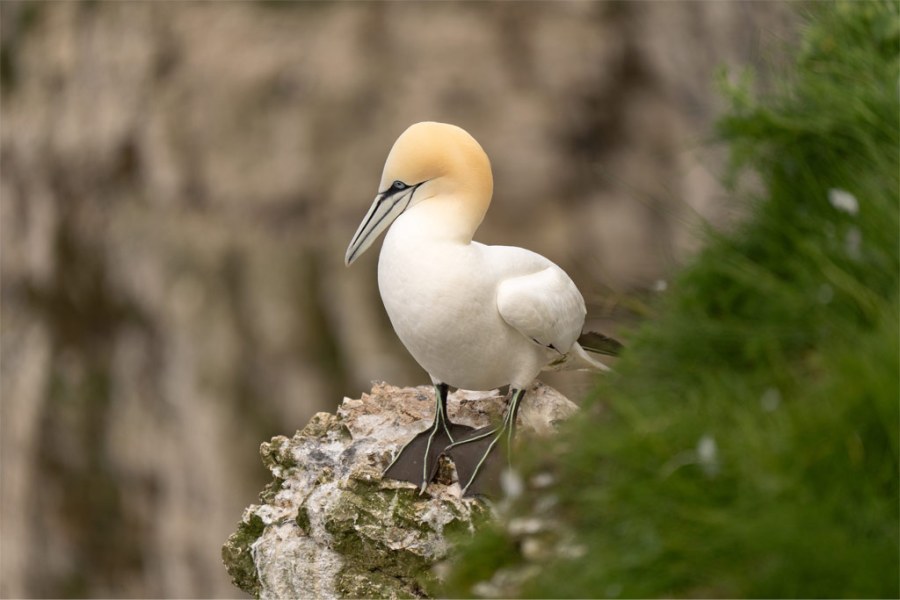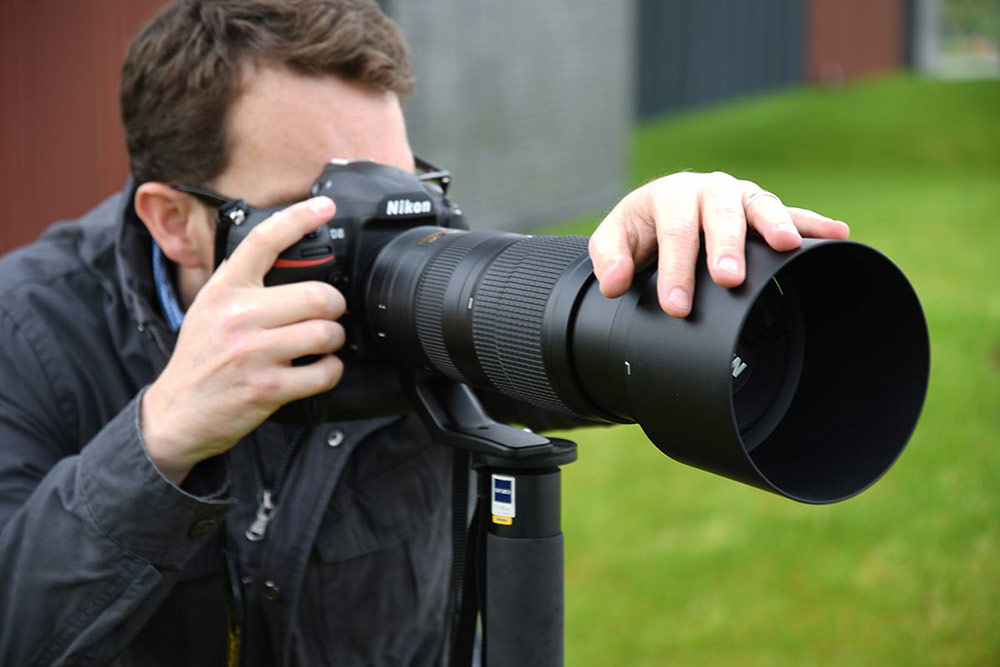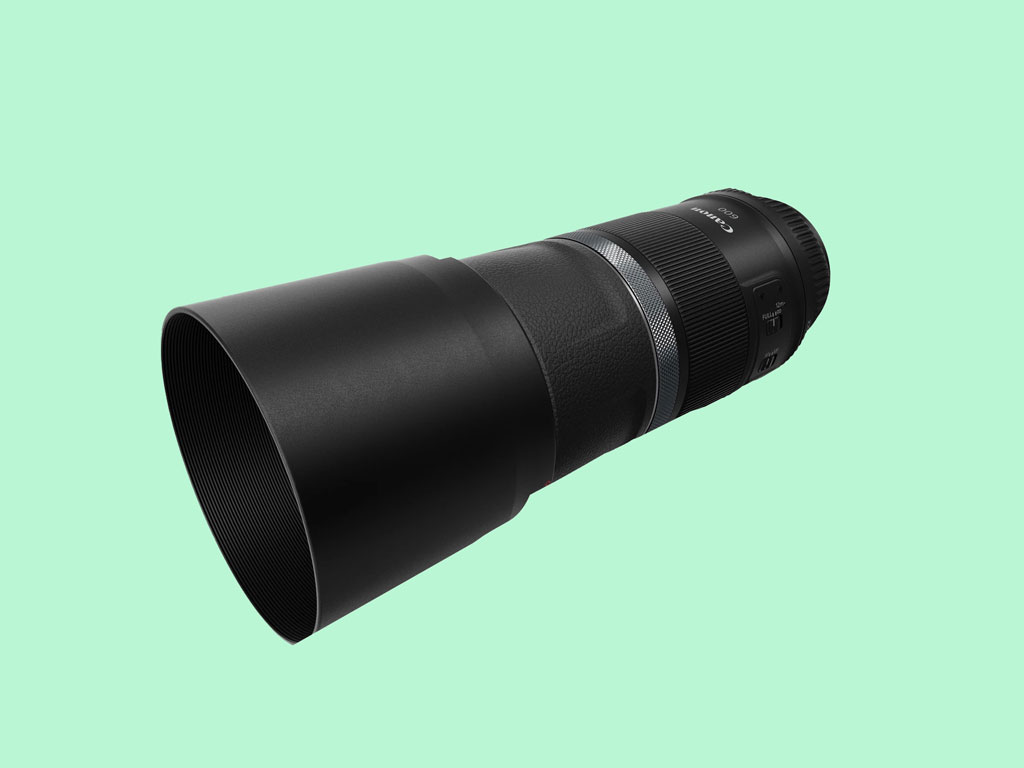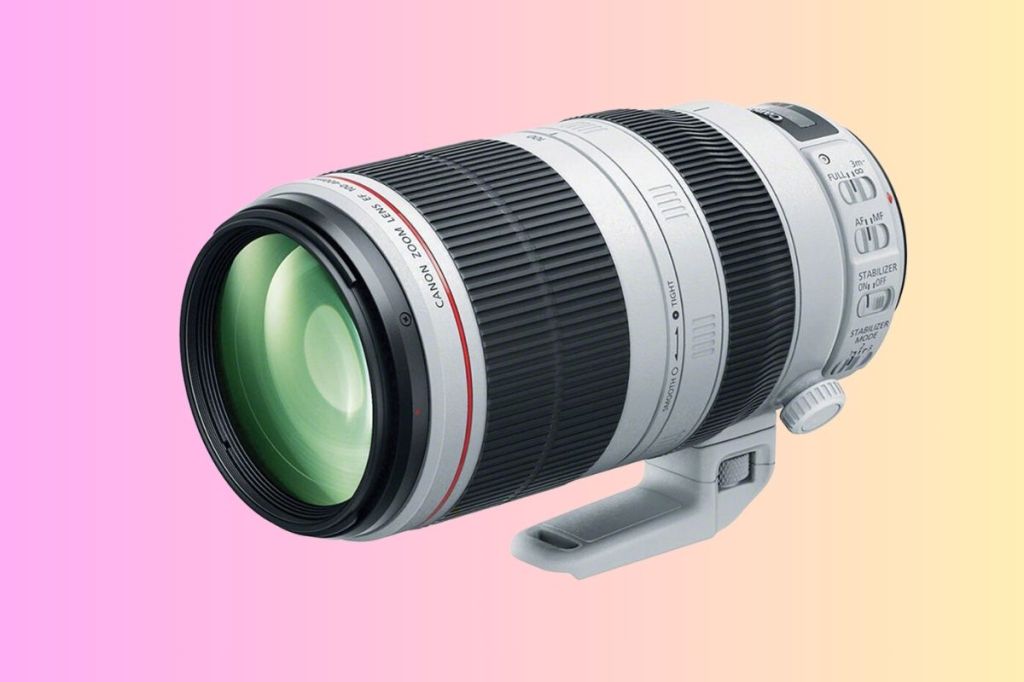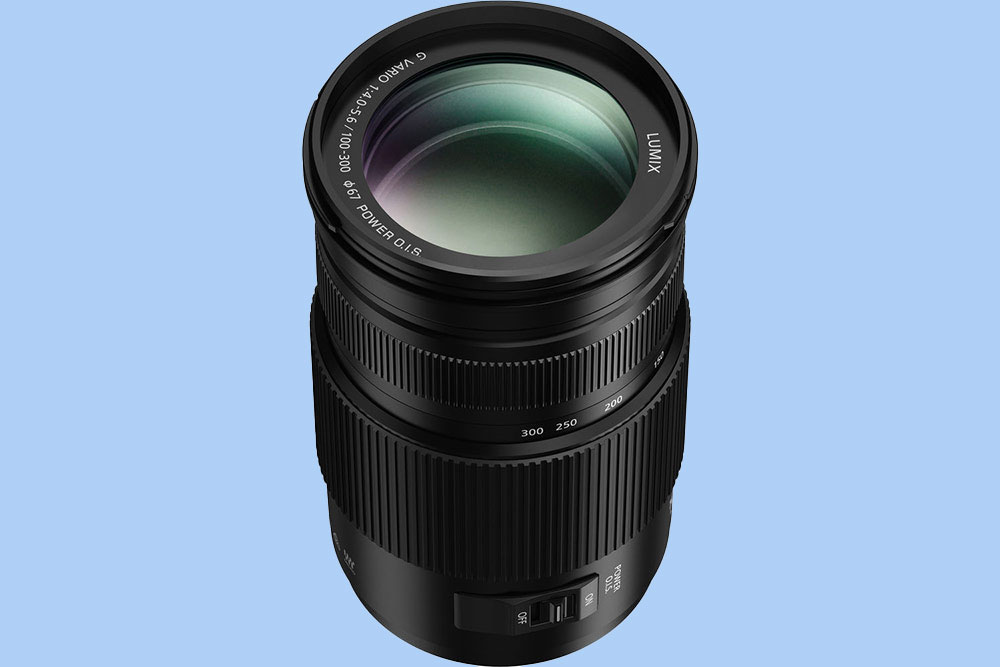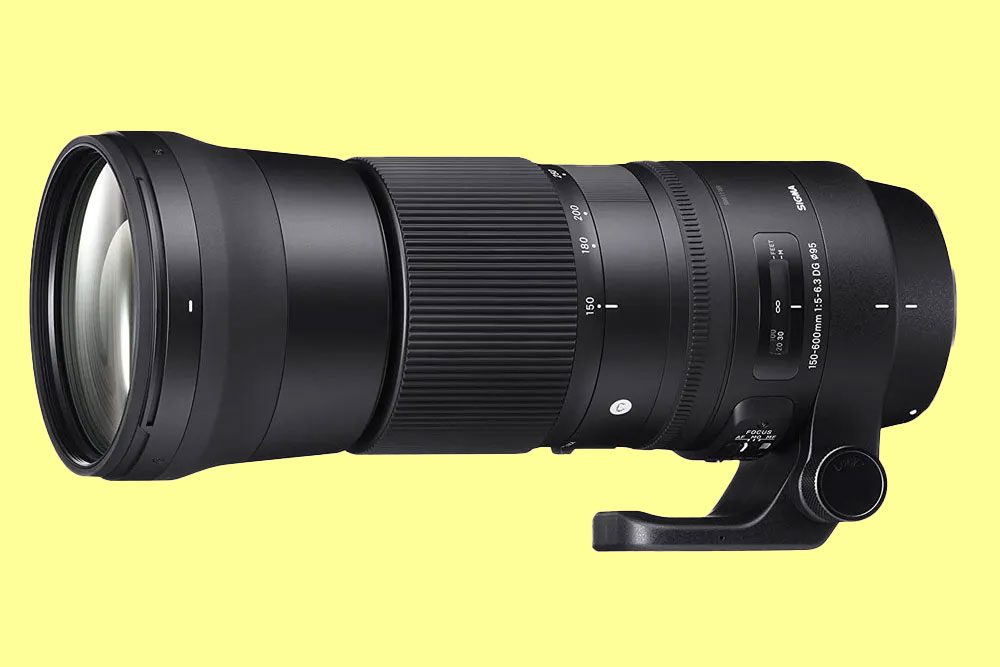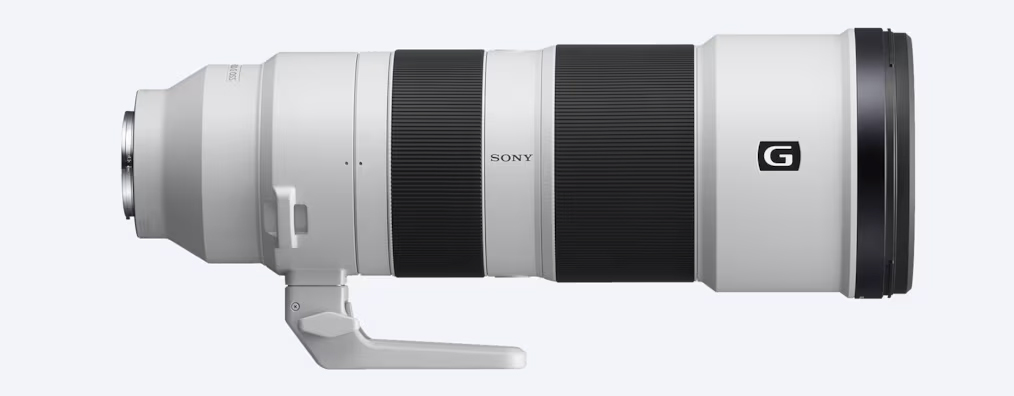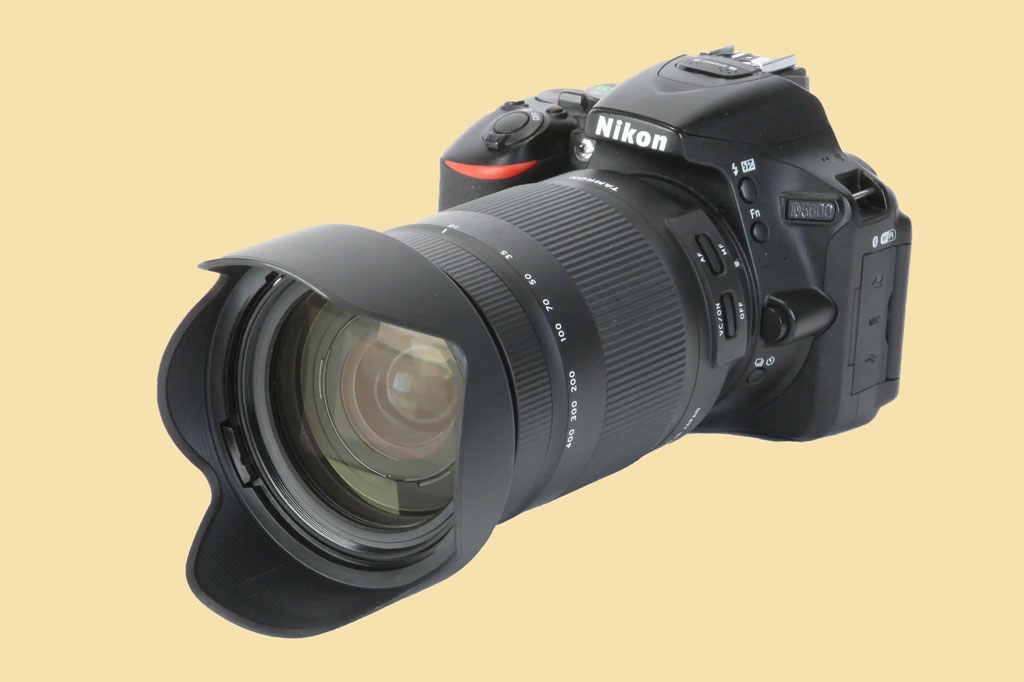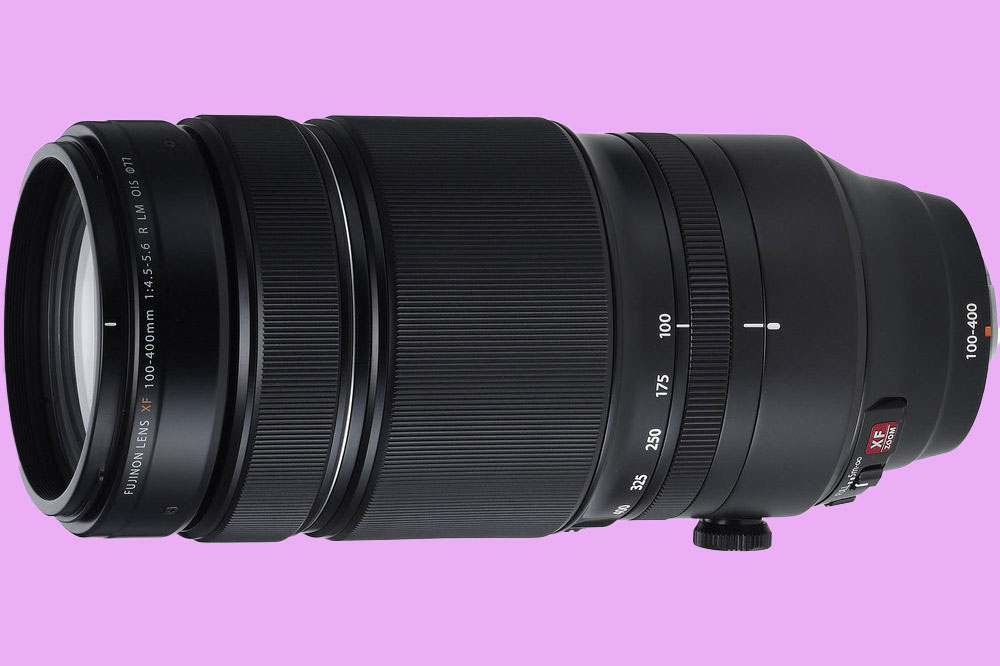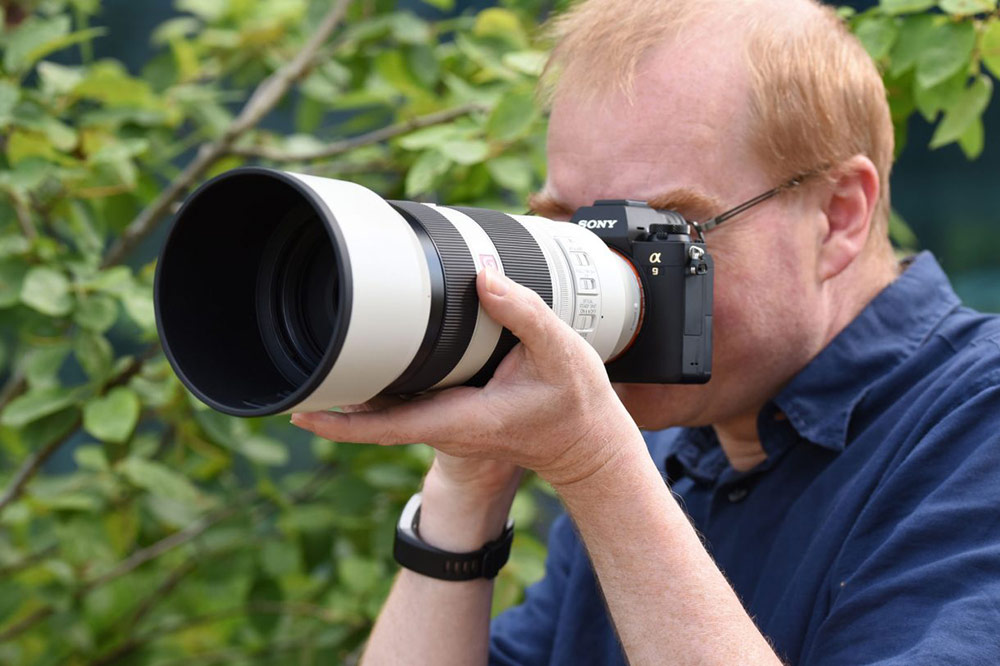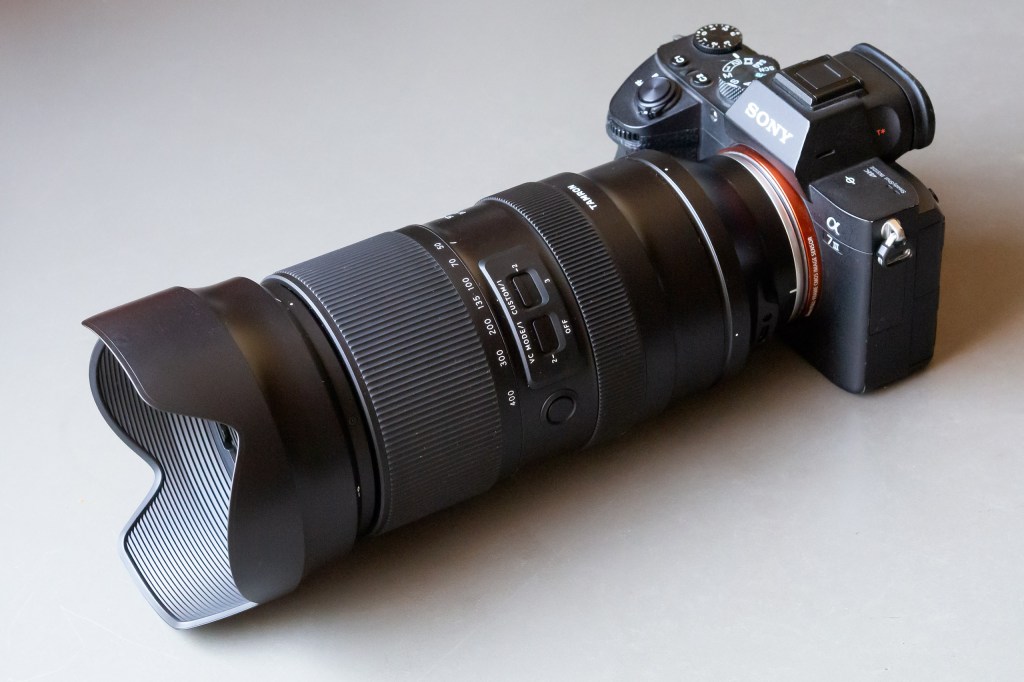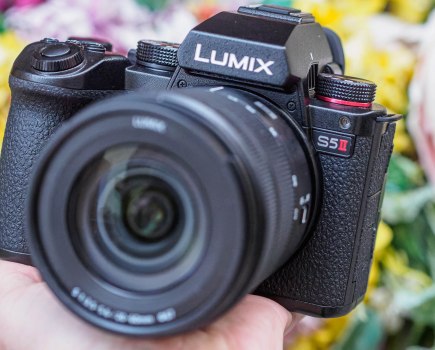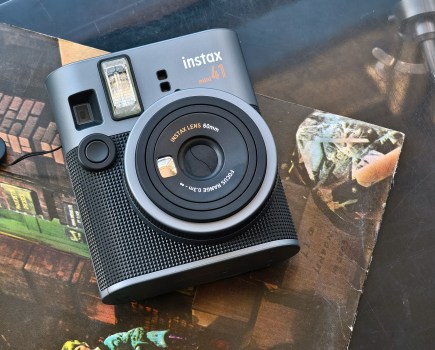Huge telephoto prime lenses are prohibitively expensive to most people who want to get into wildlife photography. The good news is that there are budget-friendly telephoto zooms that provide real shooting versatility at affordable prices. If you want to master animal photography quickly this guide shows the best lenses to start out with.
A telephoto zoom lens lets you get close to wildlife without disturbing it. This is especially useful for animals that are timid or even dangerous. You want as much telephoto reach as you can get – ideally more than 300mm. This can mean a little shopping around. Fortunately, we’ve reviewed plenty that fit the bill for wildlife images; we’ve picked out the best telephoto zoom lenses for this guide.
Telephoto zooms are useful for other subjects, too. These lenses are often the first choice for sports photographers who want to fill the frame tightly with their subject and create real impact with their images. For more inspiration or to learn how to get into sports photography, don’t miss our guide on how to shoot action and sports. You may also be interested in finding out the best cameras for action and sports photography.
For more information on our testing criteria and helpful tips on how to choose the best budget telephoto lenses for wildlife, scroll down to the explainer section at the bottom of this page.
Best budget telephoto lenses for wildlife: our quick list
Not only will you find the best budget telephoto lenses, but also some of the best deals, as our ‘Buy now’ buttons are set to automatically take you to the best prices from trusted retailers. There is a list of other retailers below each lens, so you can find the right deal for you.
- Nikkor AF-S 200-500mm f/5.6E ED VR – Buy now
- Canon RF 100-400mm f/5.6-8 IS USM – Buy now
- Canon RF 800mm f/11 IS STM – Buy now
- Sigma 100-400mm f/5-6.3 DG DN OS Contemporary – Buy now
- Canon EF 100-400mm f/4.5-5.6L IS II USM – Buy now
- Panasonic Lumix G Vario 100-300mm f/4-5.6 II Power OIS – Buy now
- Sigma 150-600mm f/5-6.3 DG OS HSM | S – Buy now
- Sony FE 200-600mm f/5.6-6.3 G OSS – Buy now
- Tamron 18-400mm f/3.5-6.3 Di II VC HLD – Buy now
- Fujinon XF 100-400mm f/4.5-5.6 R LM OIS WR – Buy now
- Sony FE 100-400mm f/4.5-5.6 GM OSS – Buy now
- Tamron 50-400mm f/4.5-6.3 Di III VC VXD – Buy now
Why you can trust Amateur Photographer
We spend many hours testing every product we recommend, in detail, in a variety of situations and shooting scenarios, and only use experts for our reviews, so you can be sure that you’re getting the best products. Find out more about our expert writers.
Nikkor AF-S 200-500mm f/5.6E ED VR
Amateur Photographer verdict
An excellent and affordable telephoto lens that doesn’t compromise on optical quality. Perfect for frame-filling wildlife photography- Light enough to use hand held
- Good quality throughout zoom range
- Fast, reliable focusing
- 4.5 stop benefit VR system
- Not officially weather sealed
- Not compatible with all Nikon DSLRs
At a glance:
- Price: $1,399 / £1,249
- Nikon F-mount
- Maximum aperture: f/5.6
- Minimum aperture: f/32
- Lens construction: 19 elements in 12 groups (including 3 ED glass elements)
- Filter thread: 95mm
- Weight: 2300g (including tripod collar)
For Nikon DSLR shooters, the 200-500mm f/5.6 offers a unique option, being a relatively affordable telephoto lens, while offering a very useful long range – extending to fully 750mm equivalent on DX-format cameras such as the Nikon D500. Its f/5.6 maximum aperture means that it’s relatively portable considering its range, and not so heavy that it can’t be shot handheld. The lens’ effective VR system is rated at giving a benefit of 4.5 stops which helps handheld shooting too. Focusing is snappy and accurate, thanks to the AF-S motor.
However, it’s not claimed to be weather-sealed, and being an E-type lens with an electromagnetic diaphragm, it’ll only work on relatively recent Nikon DSLR bodies – so do check compatibility with your camera before buying. Check out our guide to more of the best lenses for Nikon DSLRs
Read our Nikkor AF-S 200-500mm f/5.6E ED VR Review
Canon RF 100-400mm f/5.6-8 IS USM
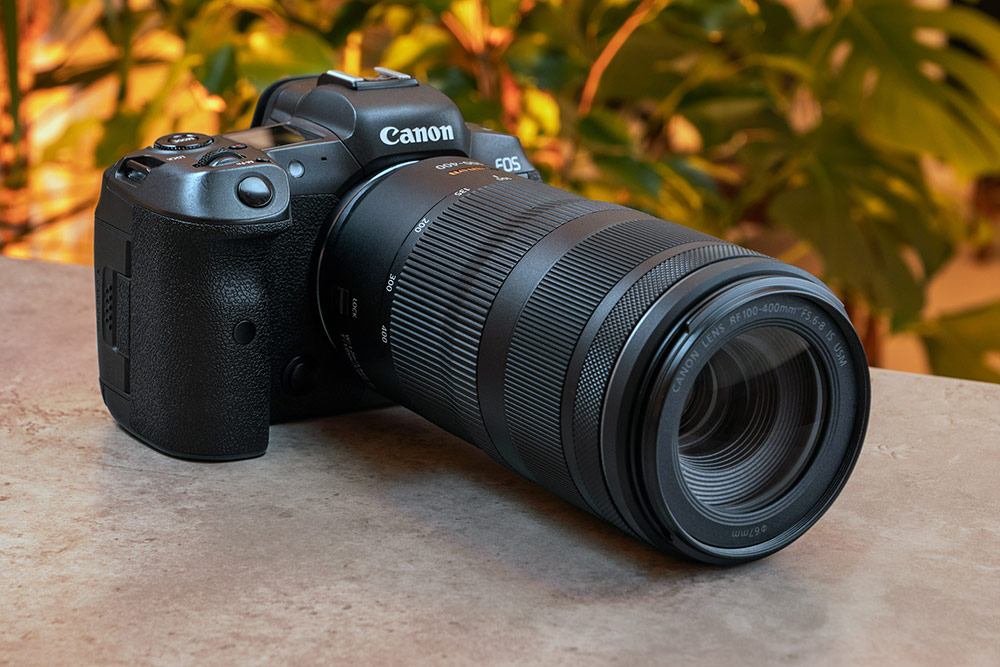
Amateur Photographer verdict
It’s limited maximum aperture is countered by the R cameras’ good noise performance, it’s a great alternative for the pricier L series 100-500mm option if you can look past its limitations.- Sharp even wide open
- Excellent value for money
- Balances well with EOS R bodies
- Autofocus sometimes misses
- Limited to f/5.6
At a glance:
- Price: $650 / £699
- Canon RF-mount
- Maximum aperture: f/5.6
- Minimum aperture: f/45
- Lens construction: 12 elements in 9 groups
- Filter thread: 67mm
- Weight: 635g
Canon RF users get one of the best budget telephoto lenses for wildlife in the form of the RF 100-400mm f/5.6-8 IS USM. If someone who can’t afford the high prices commanded by Canon’s top-of-the-line L-series lenses, then this budget option is well worth considering. As we explored in our full review, Canon has done a good job of threading the needle here – compromises are inevitable with cheaper lenses, but none of the ones made here stop the RF 100-400mm f/5.6-8 IS USM from being a viable option.
So yes, the maximum aperture is limited to f/5.6. However, the excellent high-ISO performance of EOS R cameras means you’ll be able to skate by. Sharpness is generally good, even when the lens is used wide open, and while there are distortions in images, they are all easily correctable with software. In our testing, we found the hit-rate for bird-in-flight images to be pretty good. The Nano-USM autofocus motor missed the mark a few times, but we got enough usable shots for the lens to justify its price tag – which, again, is very reasonable.
Read our Canon RF 100-400mm F5.6-8 IS USM review
Canon RF 800mm f/11 IS STM
Amateur Photographer verdict
An extremely affordable super telephoto lens, with an impressive reach, however the limited maximum aperture is not for everyone.- Compact for focal length
- Good handling
- Compatible with Canon 1.4x and 2x teleconverters
- Fixed, modest maximum aperture
At a glance:
- Price: $999 / £989 new
- Canon RF-mount
- Fixed aperture: f/11
- Lens construction: 11 elements in 8 groups
- Filter thread: 95mm
- Weight: 1260g
Canon offers a pair of fixed aperture, budget-priced telephoto primes, the 800mm and the RF 600mm f/11 IS STM priced at $799 / £819. The 800mm’s modest f/11 aperture does mean you need to exploit higher ISOs to obtain fast shutter speeds even in good light, but the quality imaging performance of Canon EOS R cameras means this is not a problem.
Canon has used diffractive optics technology in this lens to enable a compact, lightweight telephoto and it measures just 28mm when retracted so it is very compact and it’s fast to extend the lens really to start shooting. Optically, it is an impressive optical performance for the money and an effective 4-stop image stabiliser assists handheld shooting at slower shutter speeds.
Read more about Canon’s telephotos for wildlife photography
Sigma 100-400mm f/5-6.3 DG DN OS Contemporary
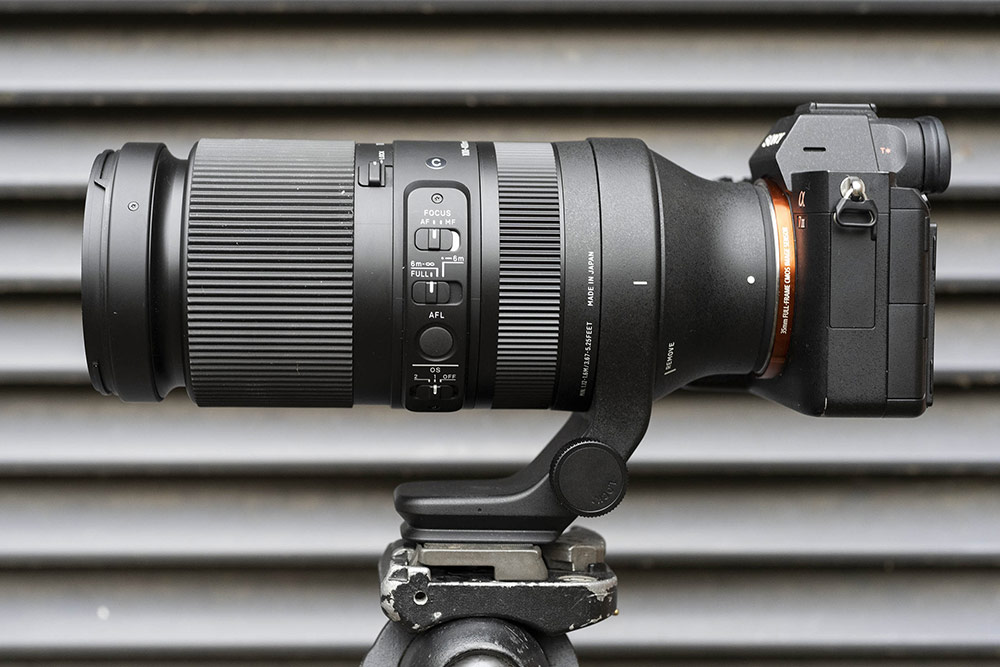
Amateur Photographer verdict
A reasonably compact lens that balances well on a full-frame camera. A gat value telephoto lens that delivers stunning contrast and sharpness- 5-axis stabilisation
- Great price
- 5-axis stabilisation
- Light weight
- Limited to f/5
- Sony users don’t get teleconverter/USB Dock
At a glance:
- Price: $949 / £699
- Mounts: L, Sony E
- Maximum aperture: f/5
- Minimum aperture: f/40
- Lens construction: 22 elements in 16 groups
- Filter thread: 67mm
- Weight: 1140g
Sigma’s full-frame 100-400mm f/5-6.3 DG DN OS Contemporary for Sony E-mount and the L-mount alliance is a very welcome optic indeed, especially at its budget price. It earned the coveted Gold Award in our test and review, delivering absolutely stunning contrast and sharpness in a body that doesn’t weigh the user down too much.
The maximum aperture is a little narrower than many comparable lenses in the same category, but having on-board 5-axis optical image stabilisation does well to compensate. We found we could get tack-sharp shots at the outer edge of the telephoto end, with shutter speeds as slow as 1/15sec. The value for money here is absolutely top-notch.
Read our Sigma 100-400mm F5-6.3 DG DN OS Contemporary review
Canon EF 100-400mm f/4.5-5.6L IS II USM
Amateur Photographer verdict
Excellent for fast and erratic subjects, like birds and delivers exceptional sharpness. Apart from some built hick-ups and a little vignetting there’s not much to fault on.- Useful four-stop stabiliser
- Excellent sharpness
- 9-bladed aperture
- Not so “budget”
At a glance:
- Used Price: $1,450 / from £1,200 (£2,549 new)
- Canon EF-mount
- Maximum aperture: f/4.5
- Minimum aperture: f/40
- Lens construction: 21 elements in 16 groups
- Filter thread: 77mm
- Weight: 1640g (with tripod mount)
Most of the camera makers produce high-end 400mm zooms, typically offering a decent range in a relatively portable package with fast, ultrasonic-type autofocus and optical image stabilisation.
Canon’s is a particularly fine example: a significant improvement on the firm’s older ‘Mark I’ version, it’s impressively sharp at all focal lengths. On APS-C models such as the Canon EOS 7D Mark II, it offers a very useful 160-640mm equivalent range. It’s a more expensive lens than others in this round-up, but it really is excellent, and you also may be able to get a better price if you hunt for a second-hand version.
In our wildlife-photography field test of the lens, we found the lens to be highly adept at capturing images of birds in flight, delivering sharp shots time and again. Having the four-stop image stabiliser especially helped us nail the images we were after. Don’t forget to check out our guide to other great Canon EF lenses
Read our Canon EF 100-400mm f/4.5-5.6L IS II USM Field Test
Panasonic Lumix G Vario 100-300mm f/4-5.6 II Power OIS
Amateur Photographer verdict
This affordable and versatile Micro Four Thirds lens effectively offers a 200-600mm reach, for £500 thats’s no little feat- Long zoom in compact build
- Dual Image Stabilisation
- Snappy, silent autofocus
- Limited to f/4-5.6
At a glance:
- Price: $648 / £500 new
- Micro Four Thirds mount
- Maximum aperture: f/4
- Minimum aperture: f/22
- Lens construction: 17 elements in 12 groups (one ED lens)
- Filter thread: 67mm
- Weight: 520g (excluding front and rear lens caps and hood)
If there’s one lens that epitomises the size advantages of Micro Four Thirds for telephoto work, it’s this hugely popular 100-300mm zoom. One of Panasonic’s earliest lenses for the Micro Four Thirds system in its original guise, it gives a 600mm equivalent range in a very compact package, with optical image stabilisation and fast, silent focusing.
Its weather-resistant construction and smart black-barrel design will appeal to Panasonic system users. If you need more reach, then Panasonic’s Leica-branded 100-400mm f/4-6.3 OIS goes all the way to 800mm equivalent, although at a significant premium priced at $1298 / £1198.
Read why we love the Panasonic Lumix G Vario 100-300mm f/4-5.6 II Power OIS
Sigma 150-600mm f/5-6.3 DG OS HSM | S
Amateur Photographer verdict
A pro lens with exemplary build quality and sharpness, but get ready for some aching arms as its weighs more than 2.5kgs- Very good sharpness
- Highly capable autofocus
- Bigger than Contemporary alternative
- Pricier than Tamron equivalents
At a glance:
- Price: $2,229 / £1,429 with 1.4x teleconverter – [Buy now link price may not include teleconverter. Please check]
- Mounts: Canon EF, Nikon F, Sigma SA
- Maximum aperture: f/5
- Minimum aperture: f/22
- Lens construction: 24 elements in 16 groups
- Filter thread: 105mm
- Weight: 2860g
When Sigma announced two 150-600mm zooms with the same base specifications all the way back in 2014, it looked like a strange decision, but on testing both of them we found that it does make sense. We especially like the Sport version – it’s huge and expensive, but seriously sharp, with impressively fast autofocus. It’s not so big that you can’t shoot it handheld at a pinch, although for extended sessions you’ll need a sturdy monopod at least.
The Contemporary version is smaller and easier to carry, and a much more affordable telephoto lens priced at $1,049 / £899, but it doesn’t give quite the same image quality. Tamron’s similar 150-600mm zooms are very worthy alternatives, too. The Tamron 150-600mm f/5-6.3 VC USD G2 is priced at $1,399 / £1,120.
Read our Sigma 150-600mm f/5-6.3 DG OS HSM S Field Test
Sony FE 200-600mm f/5.6-6.3 G OSS
Amateur Photographer verdict
Not only it it delivers a strong, consistent optical performance, it combines this with fast, quiet focusing and a first-class build quality.- Great range of long focal lengths
- Excellent optically
- Moisture and dust-sealed
- Compatible with Sony 1.4x and 2x teleconverters
- A little bulky
- Minimum focusing distance is a modest 2.4m
At a glance:
- Price: $1,998 / £1,559
- Sony E-mount
- Maximum aperture: f/5.6
- Minimum aperture: f/32
- Lens construction: 24 elements in 17 groups
- Filter thread: 95mm
- Weight: 2115g
The Sony FE 200-600mm f/5.6-6.3 G OSS has proved very popular among wildlife shooters since its introduction, and its reputation is thoroughly deserved. It’s keenly priced, and the telephoto range makes it ideally suited to a broad range of subjects, from small garden birds to large mammals. Importantly, its advanced optical construction that includes five extra-low dispersion glass elements and an aspherical element delivers a fine optical performance with minimal chromatic aberrations and high sharpness, while Sony’s Nano AR coating does a great job of suppressing flare and reflections.
While the lens is on the large side, handling rates highly and the built-in, five-axis optical image stabilisation system does a great job of enabling sharp shooting even at relatively slow shutter speeds.
Read our Sony FE 200-600mm f/5.6-6.3 G OSS field test
Tamron 18-400mm f/3.5-6.3 Di II VC HLD
Amateur Photographer verdict
An ideal lens for hobbyists and amateurs who doesn’t want to carry around multiple lenses. It is a great all-in-one lens that’s affordable and covers a versatile focal range- Excellent zoom range
- Weather-resistant build
- Image quality inferior to tele zooms
- ShSharpness falls off at long end
At a glance:
- Price: $729/ £665
- Mounts: Canon EF, Nikon F
- Maximum aperture: f/5
- Minimum aperture: f/40
- Lens construction: 16 elements in 11 groups
- Filter thread: 72mm
- Weight: 710g
All-in-one superzooms aren’t usually the first choice for wildlife, but they can be handy in situations where you need to travel light or don’t have time to change lenses. Tamron’s ground-breaking 18-400mm, designed for APS-C sensor cameras, is the longest lens of its type, giving an impressive 600mm equivalent range. It’s also dust- and splash-resistant for outdoor shooting, which can be a boon when shooting wildlife.
You won’t get as sharp pictures as you would with premium telephoto lenses, but with this 22.2x zoom it’ll certainly be better than not getting the shot at all.
Read our Tamron 18-400mm f/3.5-6.3 Di II VC HLD Review
Fujinon XF 100-400mm f/4.5-5.6 R LM OIS WR
Amateur Photographer verdict
A perfect partner for wildlife oriented Fuji users which effectively provides a 152-609mm equivalent range- Light enough for prolonged handheld use
- Teleconverter option
- Excellent autofocus
- Effective OIS mechanism
- No AF/MF switch
- Barrel is plastic not metal
At a glance
- Price: $1,899 / £1,299
- Fujifilm X-mount
- Maximum aperture: f/4.5
- Minimum aperture: f/22
- Lens construction: 21 elements in 14 groups (includes 5 extra low dispersion elements and 1 super extra low dispersion element)
- Filter thread: 77mm
- Weight: 1375g
Fujifilm X-system users do not have very many choices for budget telephoto lenses for wildlife (or for that matter, telephoto lenses full stop) but fortunately, this is a very good one. With a lightweight build, highly effective image stabilisation and weather-sealed construction, the Fujinon XF 100-400mm f/4.5-5.6 R LM OIS WR is an affordable telephoto lens that you can happily shoot handheld all day, especially with the help of its OIS (Optical Image Stabilisation) system which gives a 5-stop benefit.
It provides a 152-609mm equivalent range, but if you need to go even longer, the lens is also sold in a package with Fujifilm’s 1.4x teleconverter for surprisingly little extra money. Better still, the teleconverter brings barely any penalty to the lens’s excellent autofocus performance.
An alternative to the XF 100-400mm is the XF 150-600mm f/5.6-8 R LM OIS WR. This is priced at $1,999 / £1,899 and gives the full-frame equivalent coverage of 229-914mm, so it’s perfect for Fujifilm X-System users needing even greater telephoto reach.
Read our Fujinon XF 100-400mm f/4.5-5.6 R LM OIS WR Review
Sony FE 100-400mm f/4.5-5.6 GM OSS
Amateur Photographer verdict
A lens with fast and accurate autofocus that’s entirely capable of keeping up with the flagship Sony cameras remarkable speed.- Sublime image quality
- Works with full-frame and APS-C
- Very effective stabilisation
- Most expensive lens in this round-up
At a glance:
- Price: $2,498 / £2,149
- Sony E-mount
- Maximum aperture: f/4.5
- Minimum aperture: f/40
- Lens construction: 22 elements in 16 groups
- Filter thread: 77mm
- Weight: 1395g (without tripod mount)
Perfectly matched to Sony’s high-speed Alpha 9 and Alpha 9 II full-frame mirrorless cameras, this stunning telephoto lens combines fantastic image quality with super-fast, near silent autofocus and extremely effective image stabilisation.
While it’s full-frame compatible, it can also be used on APS-C bodies such as the Alpha 6500, giving a 600mm equivalent reach. It’s very pricey, though, so Sony mirrorless users on a tighter budget should also consider the FE 70-300mm f/4-5.6 G OSS telephoto lens – it’s a step above the typical consumer telezoom. Don’t forget to check out our guide to the best Sony lenses.
Read our Sony FE 100-400mm f/4.5-5.6 GM OSS Review
Tamron 50-400mm f/4.5-6.3 Di III VC VXD
Amateur Photographer verdict
A unique telephoto zoom that doubles as a standard lens, whilst being versatile it still packs impressive image quality.- Good value for money
- Bokeh is handled nicely
- Impressive levels of sharpness
- Common 67mm filter thread
- Not so good for small birds or far away subjects
- Lens tripod mount has to be purchased separately
At a glance:
- Price: $1,299 / £999
- 50-400mm standard to telephoto range
- F/4.5-6.3 – f/22-32 aperture
- 25cm minimum focus distance (wide)
- Drip-proof weather-sealing
- 67mm filter thread
- Sony E mount
The Tamron 50-400mm F/4.5-6.3 Di III VC VXD is a lens that’s specifically designed for full-frame mirrorless cameras, and even more specifically, Sony E-mount cameras. With a 50mm wide end, going to 400mm at the telephoto end, it provides an 8x optical zoom ratio. The optical construction consists of 24 elements in 18 groups, making this a relatively complex lens design, while going from 50mm to 400mm requires just a 75-degree turn of the ring.
There’s a linear motor focus mechanism called ‘VXD’, which Tamron claims gives the ‘highest level of speed and accuracy in its class.’ We found the focus to be rapid, and more importantly, it was very accurate, with consistently reliable focus. Sharpness levels hold up particularly well at 400mm, with sharpness increasing across the frame as you stop down slightly.
Whilst it may not be quite long enough for photographing smaller birds, like Puffins, it does give enough reach for other birds and animals, depending on the distance. For smaller and more distant subjects, a 150-600mm lens may be needed, but these tend to cost more and weigh more. If you’re after a versatile telephoto zoom that also offers impressive image quality, the Tamron 50-400mm F/4.5-6.3 Di III VC VXD is well worth a look.
Read our Tamron 50-400mm f/4.5-6.3 Di III VC VXD review
How to choose a budget telephoto lens for wildlife
Choosing a good wildlife lens first means deciding on the focal length you want to use. The best focal length depends on how close you can get to your subject. If you need to keep your distance, then a longer focal length will serve you better, so we recommend aiming for at least a 400mm range.
If you also add in a 1.4x or 2x converter to increase this focal length, you can be going beyond 600mm or even up to 800mm at the long end of your telephoto zoom lens. Also consider the sensor size of your camera; if it’s smaller (APS-C or Micro Four Thirds), this will extend the equivalent zoom range of your lens.
Usually, telephoto zoom lenses tend to be a little cheaper, but don’t offer as bright or as wide an aperture. A telephoto lens that provides a versatile zoom coverage also saves the hassle of changing lenses in the field, which could result in a missed shot, allow dust or dirt to creep into your camera, or scare your subject.
For decent camera recommendations, check out our guide to the best cameras for bird photography.
Once you’ve found the right telephoto lenses for wildlife for you, have a look at more guides in the latest round-ups and buying advice.
Further reading:
- Photograph wildlife by understanding animal behaviour
- Complete guide to wildlife photography
- How to be an ethical wildlife photographer
- Capturing nocturnal animals in low-light animal photography

